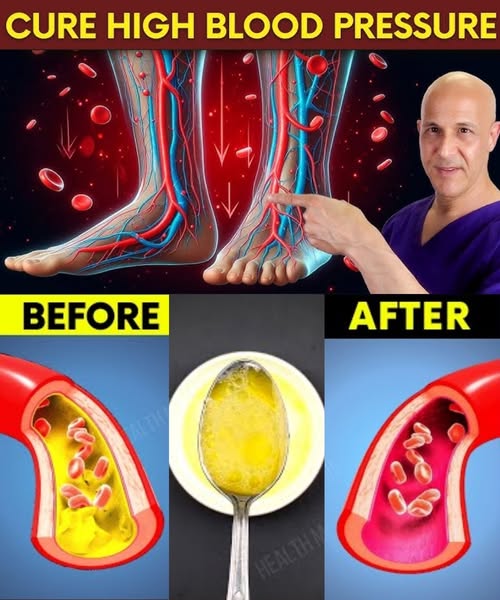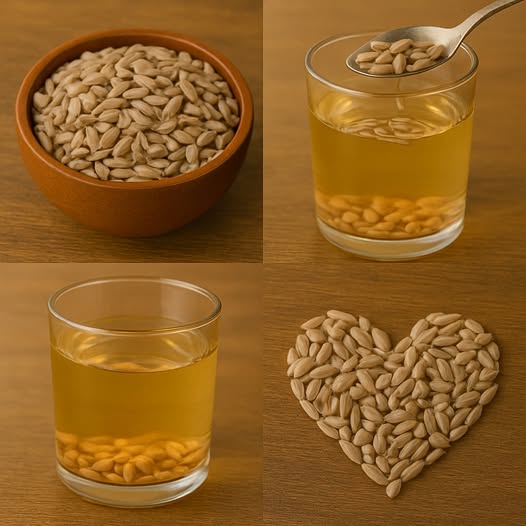Introduction: The Hidden Circulatory Superhero in Your Kitchen

Are your hands and feet always cold? Do you often feel sluggish, fatigued, or experience tingling in your extremities? These are signs of poor blood circulation—a condition that could escalate into serious cardiovascular complications if left unchecked. But what if the solution wasn’t a prescription drug, but a simple ingredient already in your pantry?
In a world saturated with expensive medications and invasive treatments, one natural remedy is proving to be a game-changer—and it only takes one teaspoon a day. Backed by centuries of traditional use and emerging scientific studies, Cayenne Pepper (yes, that fiery red spice!) has the astonishing ability to instantly boost blood flow, energize your body, and support heart health—but most doctors won’t mention it.
In this article, you’ll discover:
- Why 1 teaspoon of cayenne pepper could revolutionize your circulation
- The science behind its effects
- How to safely incorporate it into your daily routine
- Frequently asked questions and expert-backed insights
- Bonus tips to enhance blood flow naturally
Ready to unlock nature’s most powerful circulatory booster? Let’s dive in.
The Circulatory Crisis Most People Ignore
Poor circulation doesn’t just make your feet cold—it affects oxygen delivery, nutrient transport, and your overall vitality. Over 60 million adults in the U.S. alone suffer from some form of poor circulation, often linked to high blood pressure, high cholesterol, or sedentary lifestyles. Unfortunately, many people rely solely on medications, overlooking natural, effective, and affordable solutions.
That’s where Cayenne Pepper steps in.
Why Cayenne Pepper? The Secret Behind the Spice
Cayenne pepper (Capsicum annuum) is more than a spicy kitchen staple—it’s a medicinal powerhouse. Just 1 teaspoon (around 2 grams) contains a potent compound called capsaicin, responsible for both its heat and vascular-boosting properties.
How Does It Work?
Capsaicin activates a receptor called TRPV1, which plays a crucial role in vasodilation—the widening of blood vessels. This allows blood to flow more freely, which:
- Reduces blood pressure
- Improves oxygen and nutrient delivery
- Prevents clotting and plaque build-up
- Combats cold hands and feet
- Enhances stamina and mental clarity
💡 Clinical Insight: A 2015 study published in the Journal of Clinical & Experimental Hypertension found that capsaicin helped lower blood pressure by relaxing blood vessels and enhancing nitric oxide production.
Top Benefits of 1 Teaspoon of Cayenne Pepper Daily
1. Instantly Boosts Circulation
Almost immediately after ingestion, cayenne stimulates the heart and arteries to pump blood more effectively throughout the body.
2. Natural Blood Pressure Regulator
Capsaicin supports nitric oxide production, a molecule that helps relax and expand blood vessels, reducing strain on the cardiovascular system.
3. Prevents Blood Clots
Its natural blood-thinning properties can help prevent dangerous clot formation—a key factor in strokes and heart attacks.
4. Fights Inflammation
Chronic inflammation is a root cause of many circulation issues. Cayenne contains powerful antioxidants like vitamin C and carotenoids that counteract inflammation.
5. Aids in Detoxification
Improved blood flow means faster toxin removal and enhanced liver and lymphatic system function.
How to Use Cayenne Pepper for Maximum Effectiveness
You don’t need much—just 1 teaspoon a day is enough. Here’s how you can take it safely and effectively:
Morning Cayenne Water (The Circulation Shot)
Mix the following:
- 1 teaspoon of cayenne pepper
- 1 cup of warm water
- Optional: 1 tablespoon of lemon juice and honey
Drink it first thing in the morning to jumpstart circulation and energy levels.
In Smoothies or Juices
Add a small pinch to your green smoothie or beetroot juice for an anti-inflammatory kick.
In Meals
Sprinkle it on eggs, salads, soups, or even avocado toast. It blends easily into many dishes.
⚠️ Warning: Always start with ¼ teaspoon and gradually increase. Taking too much at once may irritate your stomach. Consult your healthcare provider if you’re on blood thinners or have digestive conditions.
Frequently Asked Questions (FAQs)
Q1: Can I take cayenne pepper if I have high blood pressure?
Yes, studies suggest capsaicin helps relax blood vessels and lower blood pressure naturally. However, always consult your doctor if you’re on medication.
Q2: Is cayenne pepper safe for daily use?
In small, controlled doses (like 1 teaspoon), it’s generally safe and even recommended. Avoid high doses or capsule forms unless directed by a professional.
Q3: How fast can I expect results?
Some people report immediate warmth and energy within minutes, while long-term benefits (like improved blood pressure and reduced inflammation) typically show after 2–4 weeks of consistent use.
Q4: What if I can’t handle the heat?
Try cayenne capsules or reduce your dose to ¼ tsp in juice or warm water. Alternatively, pair it with honey and lemon to reduce the burn.
Q5: Is there any research backing this?
Absolutely. Apart from the Journal of Clinical & Experimental Hypertension study, research from the American Heart Association and National Institutes of Health continues to highlight the cardiovascular benefits of capsaicin.
Bonus: Other Natural Circulation Boosters to Combine with Cayenne
While cayenne stands out, combining it with other natural remedies can supercharge your results:
1. Ginger
Improves circulation and digestion. A dash of cayenne and ginger tea in the morning is a powerful duo.
2. Garlic
Garlic has been shown to reduce arterial stiffness and improve overall heart health. Combine with cayenne for an anti-inflammatory punch.
3. Beets
High in nitrates, beets help widen blood vessels and lower blood pressure. A beet-cayenne smoothie is an excellent pre-workout drink.
4. Dark Chocolate
Flavonoids in dark chocolate support blood vessel flexibility and function.
Key Nutritional Stats of 1 Teaspoon Cayenne Pepper
| Nutrient | Amount (per 1 tsp) | Benefit |
|---|---|---|
| Vitamin A | 15% DV | Antioxidant, anti-inflammatory |
| Vitamin C | 4% DV | Immune support, collagen production |
| Capsaicin | ~1.5 mg | Vasodilation, pain relief, metabolism boost |
| Potassium | 3% DV | Electrolyte balance, heart rhythm |
Why Most Doctors Won’t Mention This Natural Remedy
Despite overwhelming anecdotal and clinical evidence, many doctors hesitate to recommend cayenne for circulation. Why?
- Lack of patentability: Pharmaceutical companies can’t patent natural remedies.
- Limited nutrition training in medical school
- Liability concerns over natural remedy use without prescription
That said, functional medicine practitioners and holistic cardiologists are increasingly advocating for cayenne as part of a preventative heart health regimen.
Real-Life Success Story
“I was always cold, no matter the season. A friend told me about cayenne pepper. I started taking a teaspoon in warm water every morning. Within two weeks, my hands and feet were warm, I had more energy, and even my digestion improved. I haven’t looked back since!”
– Susan M., 54, Dallas, TX
Stories like Susan’s are common. Many people report feeling revitalized, energized, and even emotionally uplifted after just a few days of use.
Conclusion: One Teaspoon, One Life-Changing Habit
The journey to better circulation doesn’t require a costly supplement, a long prescription list, or a doctor’s office visit. It starts with one teaspoon a day of a spice that’s likely already in your kitchen.
Cayenne pepper is nature’s circulatory catalyst—quick, powerful, and backed by science. Whether you’re aiming to combat cold limbs, regulate blood pressure, boost your heart health, or simply feel more alive, this one small step can make a massive difference.
But remember—consistency is key. Take it daily, pair it with a healthy lifestyle, and stay informed. Your body—and your heart—will thank you.


